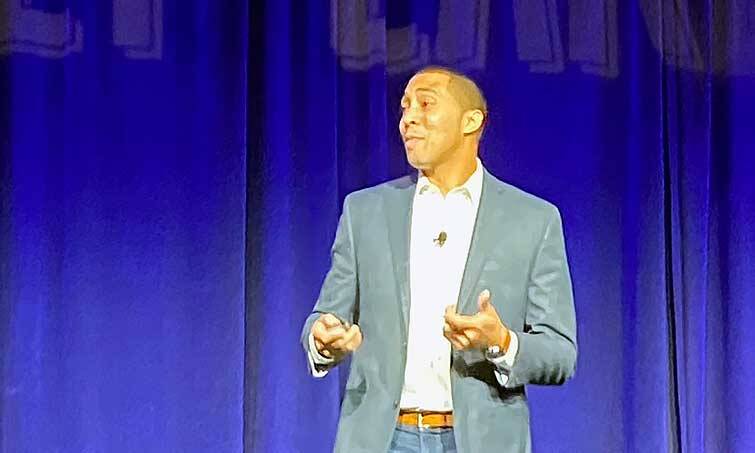
How Diversity Leads to Stronger Leaders and Better Decisions
At ASAE’s 2020 Great Ideas Conference on Sunday, two Main Stage Speakers pushed association leaders to prioritize diversity to create better workplaces and foster creative decision-making.
Better workplaces and better decision-making are the direct result of association leaders prioritizing diversity, equity, and inclusion. That’s according to two Main Stage speakers who kicked off ASAE’s 2020 Great Ideas Conference in Salt Lake City on Sunday.
“How can diversity and inclusion be at the top of your organization’s priorities and agenda, how can it be placed as a pressing problem to solve, if the people who might be at the top don’t see a problem in the first place?” asked Torin Perez, a diversity, equity, and inclusion consultant and author of Who Am I to Lead? The World Is Waiting for You.
But, according to Perez, organizations and leaders are in the right place to make a change. “The workplace is the single best place to interact with people who are different from us,” he said. “This is where transformation is possible because of the gift that we get from human connection and proximity.”
However, building an inclusive workplace requires shifts in both mindset and action. One step is for leaders to move from a closed mindset to an open one. According to Perez, this happens “when you listen to consider other points of view.”
When it comes to action shifts, Perez said leaders must learn to “be comfortable with being uncomfortable” and move from owning their intentions to owning their impact. “I’d like to believe all of us in the room have good intentions, but, ultimately, it’s about what we say and what we do and how those actions are received,” he said. “It’s about taking responsibility for what was done and said and learning from those kinds of moments.”
“As leaders, when we’re trying to grow our businesses, delight our customers, and deliver breakthrough innovations, we don’t ever hesitate to try again or alter our strategies,” Perez said. And if we bring that same relentlessness and tenacity to realizing the ideals of diversity, equity, and inclusion, … I believe we can shift from what has been a stagnation in progress to actually realizing real progress and change.”
Diversity will improve not only the workplace, but also decision-making, according to the other speaker, Lior Zoref, a researcher and author of Mindsharing: The Art of Crowdsourcing Everything.
“I’m obsessed with decisions,” Zoref said. “Decisions shape the outcomes of our careers and our personal lives. But the sad truth is that half of our decisions are wrong,”
For associations to make better decisions and fewer mistakes, they need to embrace the idea of collective intelligence. “The crowd can be smarter than the best expert you can find,” he said.
But for collective intelligence to work, the process requires three conditions: that people can think for themselves, that lots of individuals are involved (“hundreds, even thousands,” Zoref said), and that the group is diverse.
“You never know who is going to have a solution for your association,” he said. “That’s why you need to include the people who have strong ties to your association and the people who have weak ties to your association. Because loyalty doesn’t produce the best idea; it’s having the people in the room who represent all backgrounds and perspectives and who are actually experiencing the problem you are looking to solve.”
Zoref wrapped up his talk by urging the audience to move beyond IQ and EQ. “I’m here to open you to the idea that if you want to succeed more and take your associations to the next level, you must understand and in your toolbox have the third kind of intelligence—network intelligence,” he said. “Because in the end, we are smarter than me.”
Diversity, equity, and inclusion consultant Torin Perez. (Samantha Whitehorne)






Comments